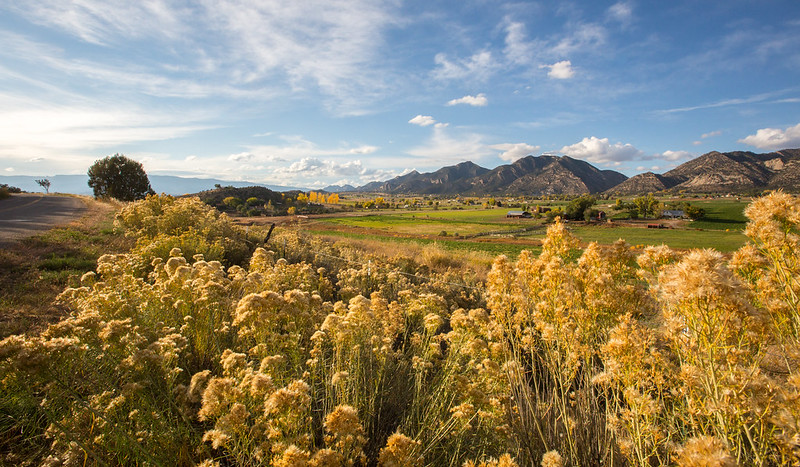Board of Directors
Samuel B. Potter, President
Dan R. Harrison, Vice President
Tom Jankovsky, Treasurer
Richard L. McNeill, Secretary
Kelly Couey, Director
Tammy Keenan, Office Manager

History of the West Divide Project
The West Divide Project was first envisioned in the late 1930s as a modest storage project to provide supplemental irrigation water to the West Divide Creek drainage. Subsequent studies for the Project anticipated the supply of water for municipal, domestic, industrial, and irrigation water supplies as well as for flood control, recreation, and fish and wildlife enhancement. An expanded service area extending beyond the West Divide Creek watershed was also anticipated in these later studies.
The Bureau of Reclamation included the West Divide Project in the Colorado River Storage Projects Act (CRSP) of 1956, which gave priority to the West Divide Project for the completion of planning reports, and named it as a participating project of the CRSP. The West Divide Water Conservancy District was formed on April 22, 1964, to provide local project sponsorship and administration of the Project.
A feasibility report published in 1966 proposed a plan for developing irrigation, municipal, and industrial water in the Crystal River drainage and along the Colorado River between Glenwood Springs and DeBeque. Under this plan, principal water storage was planned for development on the Crystal River. In response to the feasibility report, Congress authorized construction of the West Divide Project in 1966.
At the same time, opposition developed to constructing a reservoir on the Crystal River. For these reasons, the West Divide Water Conservancy District and the Bureau of Reclamation evaluated alternate configurations of the Project which would pump water from the Colorado River instead of diverting water by gravity from the Crystal River. In 1982, the Bureau of Reclamation published a planning report on the West Divide Project that summarized these additional alternatives. The evaluation of development alternatives for the West Divide Project is on-going. Following Project authorization, uncertainties about the specific water requirements for local industry became apparent.
The primary water rights for the West Divide Project were decreed in 1958 and are senior to many rights on the Colorado River. Utilization of these water rights has much merit over new, junior water rights. Accordingly, the District is continuing to evaluate alternatives that would develop these rights in a cost effective and environmentally sensitive manner.
The West Divide Water Conservancy District has evolved into a water resource management agency that is active in water issues that are of concern to its constituents. In addition to providing local sponsorship for the West Divide Project, the District has adjudicated numerous water right plans for augmentation which provide a legal water supply within the District’s Service Area for all beneficial uses. The District has constructed water storage and has acquired senior irrigation rights in association with these augmentation plans. The West Divide Water Conservancy District is also involved in regional issues that affect its citizens. These issues include water supply planning associated with existing and future water demands within the District, and the monitoring and management of water quality associated with land uses including oil and gas extraction.

